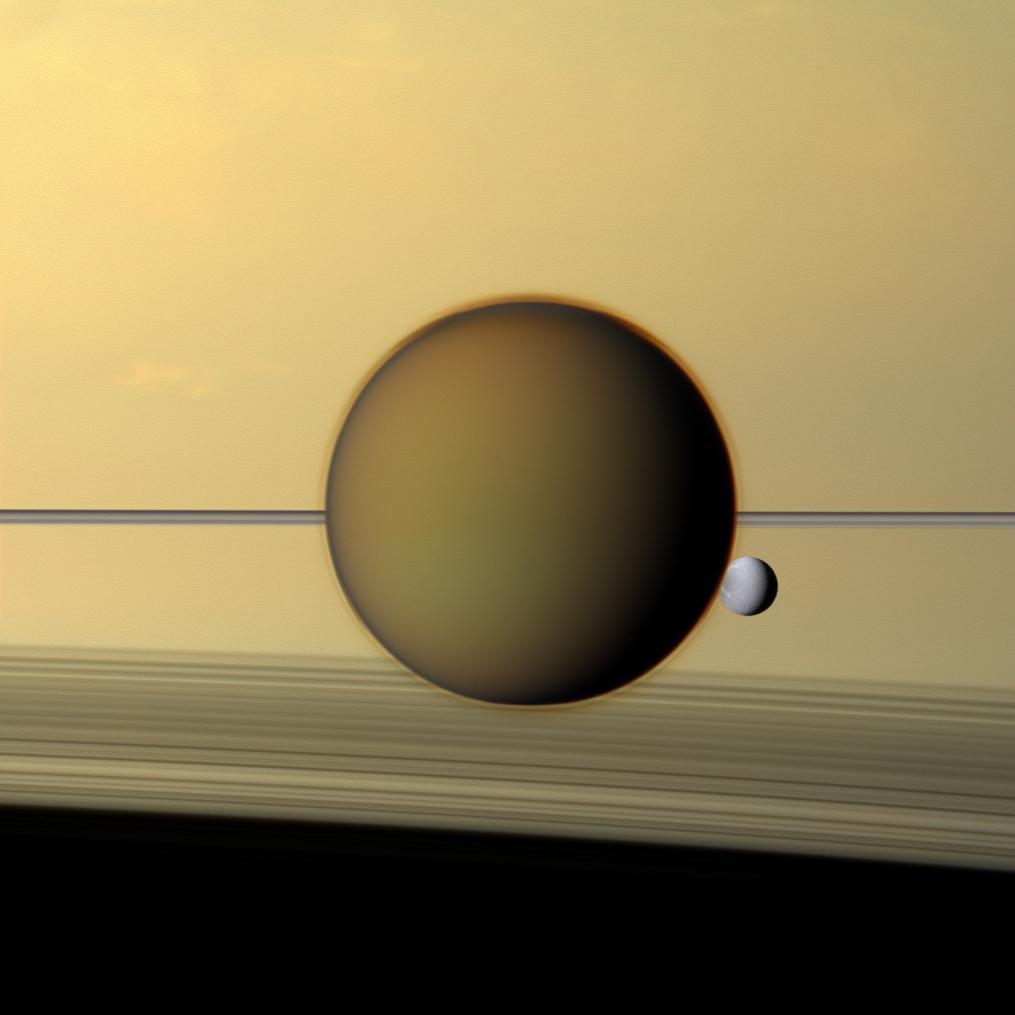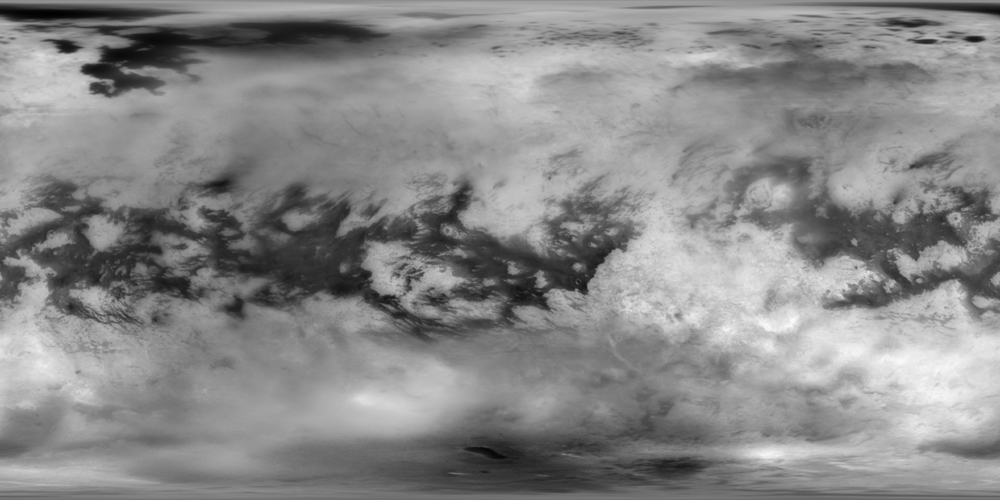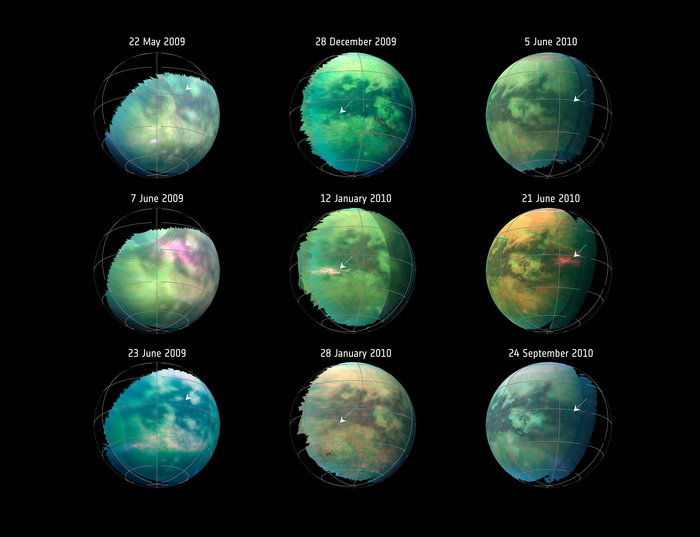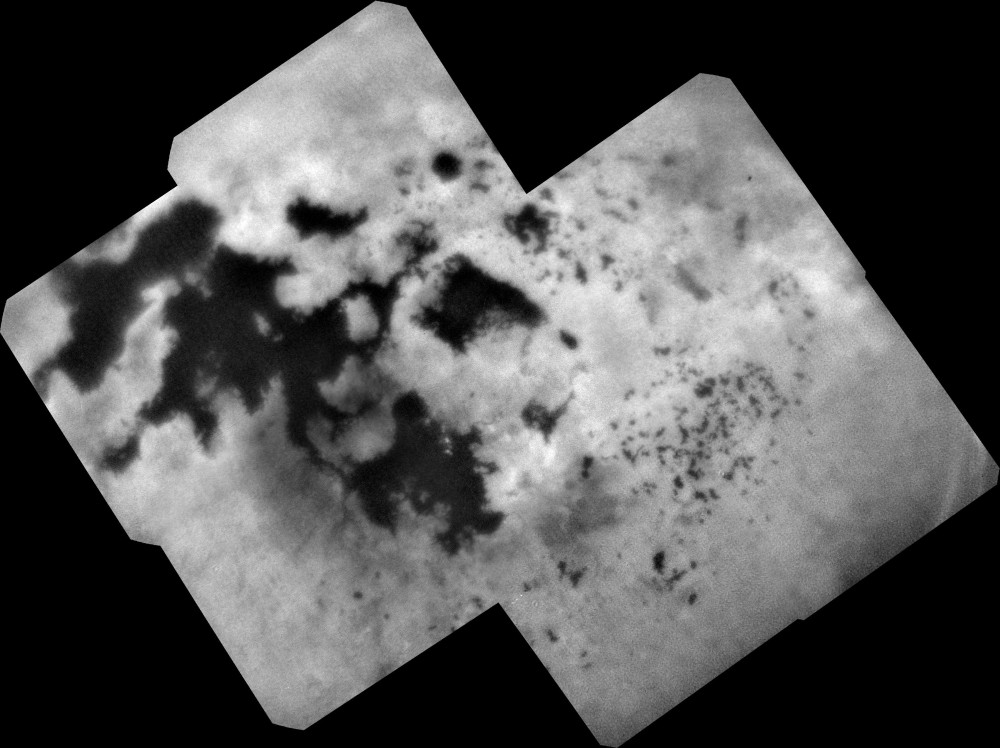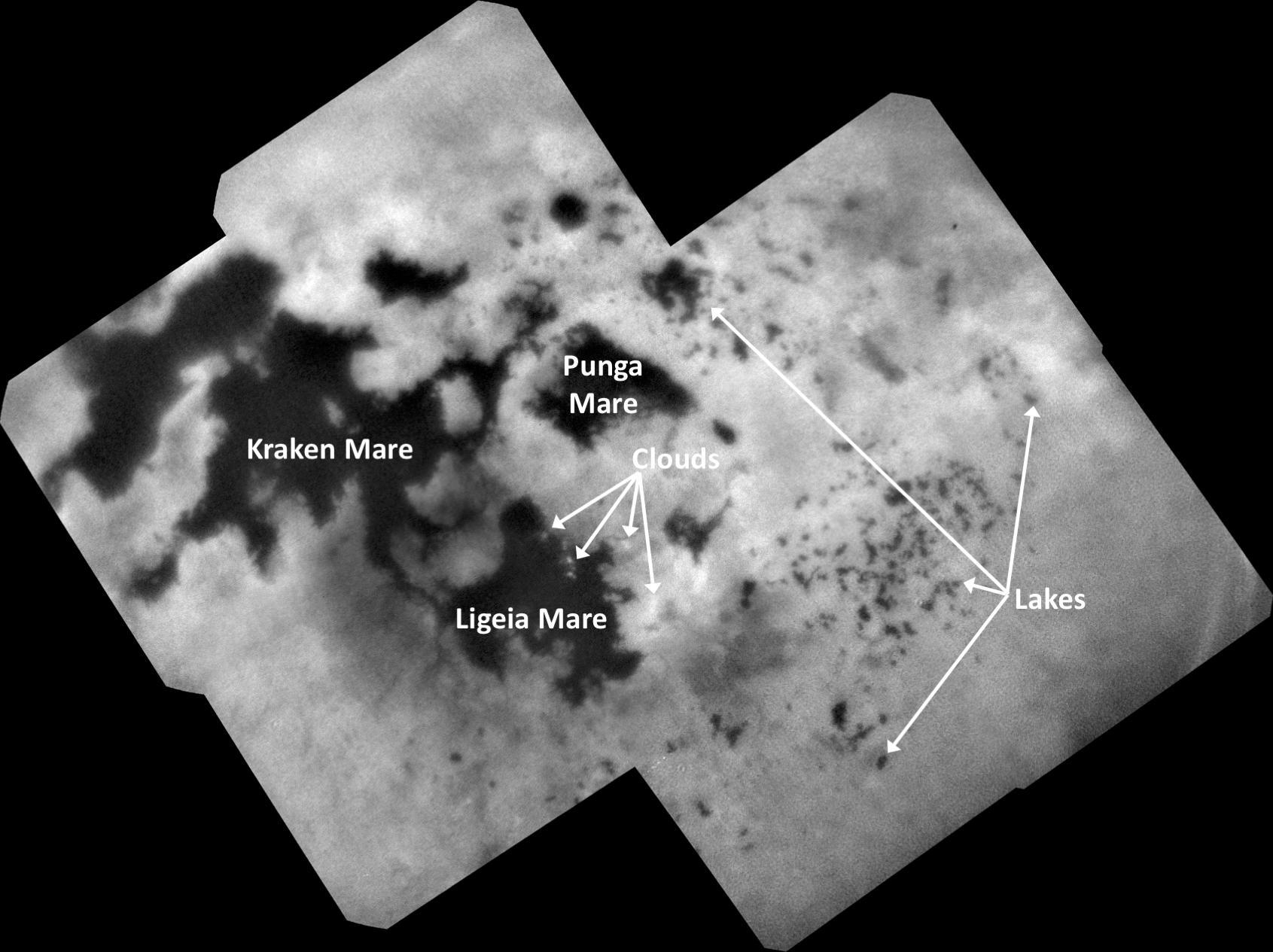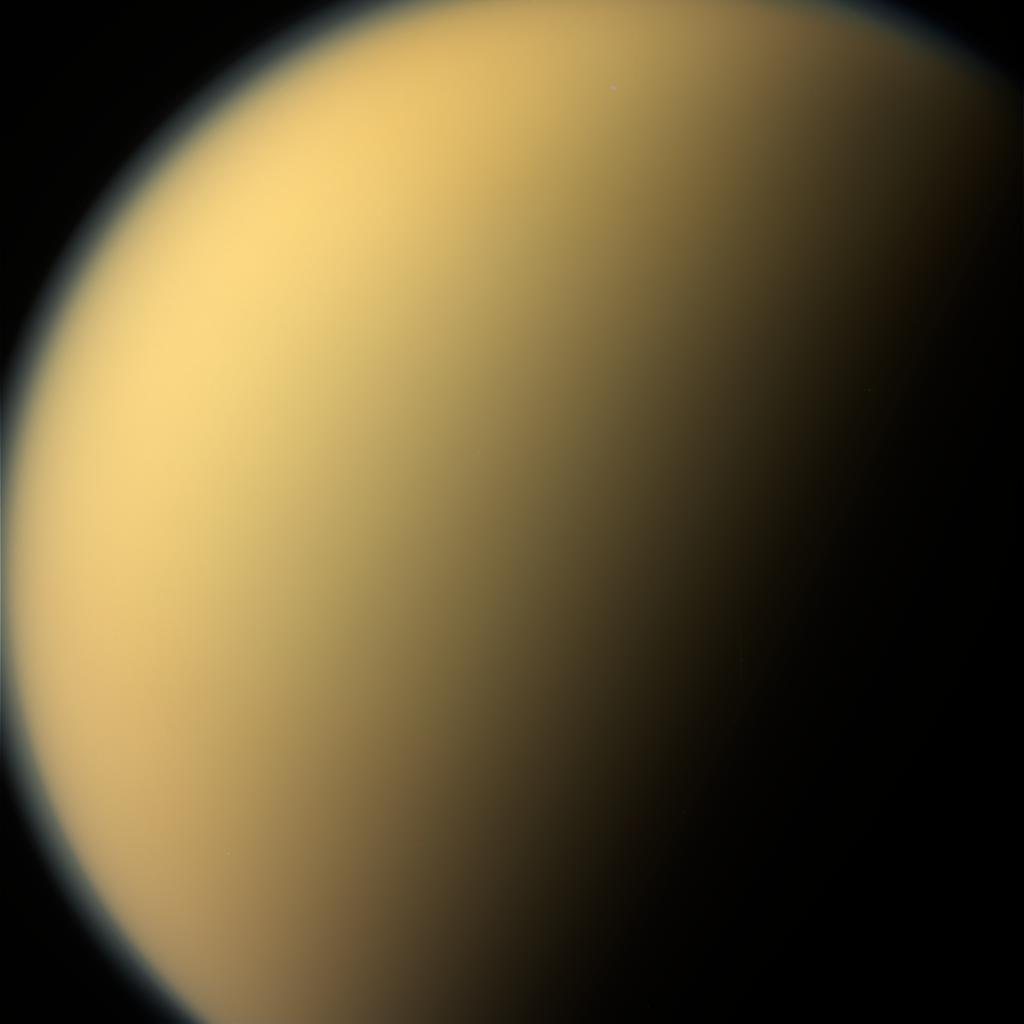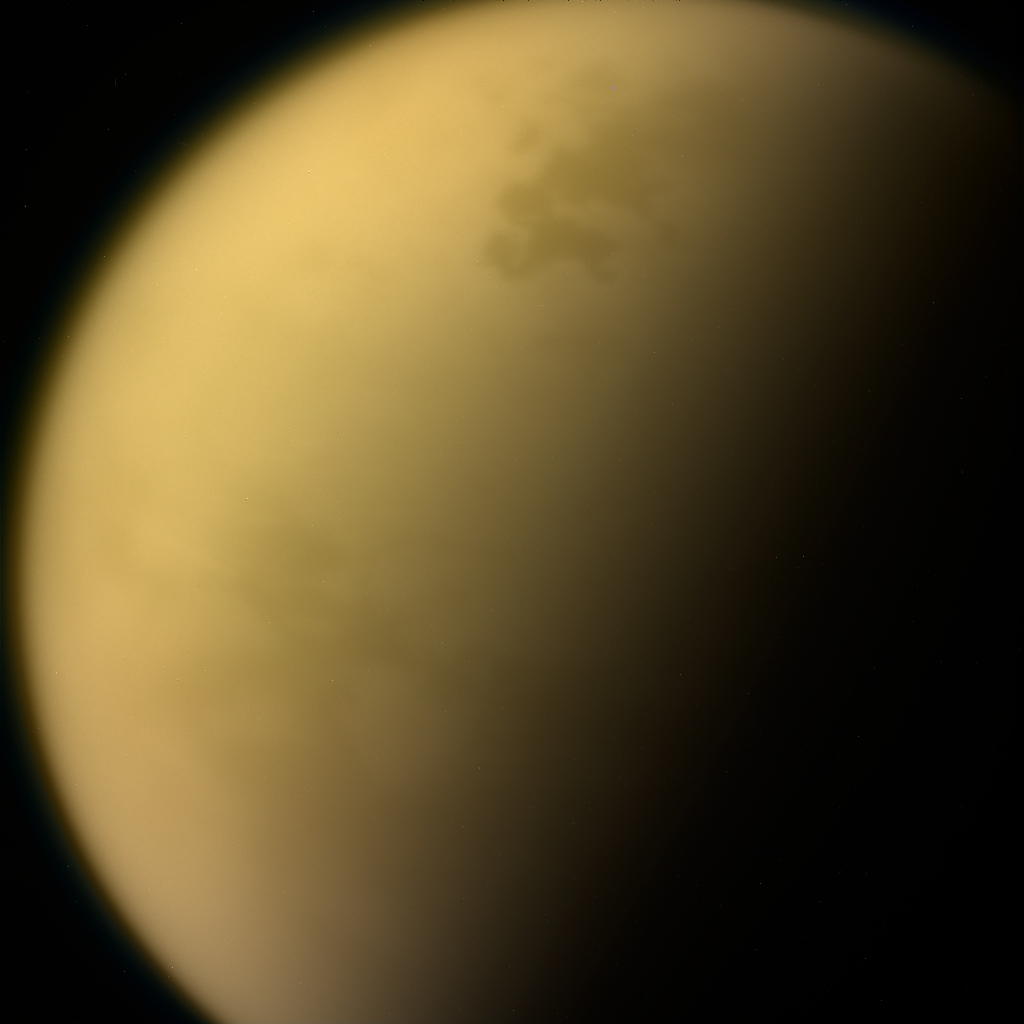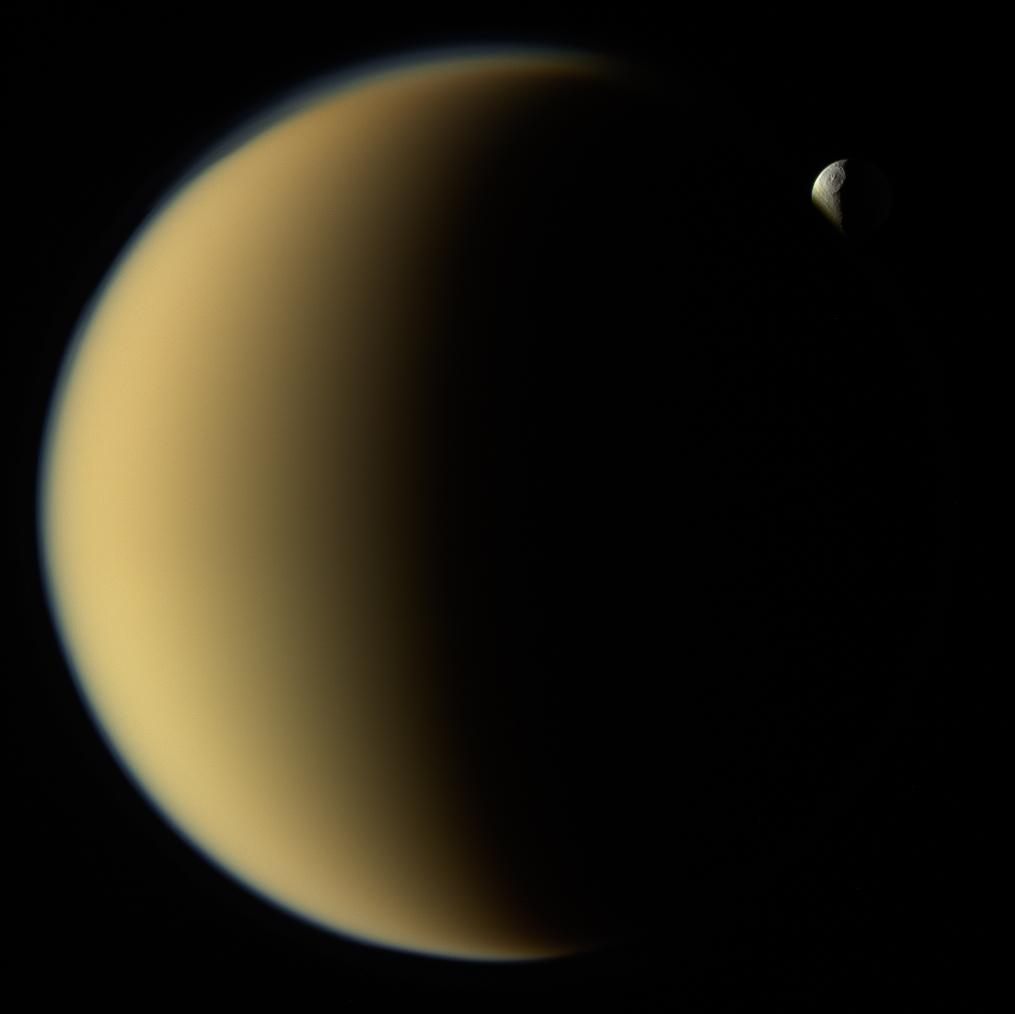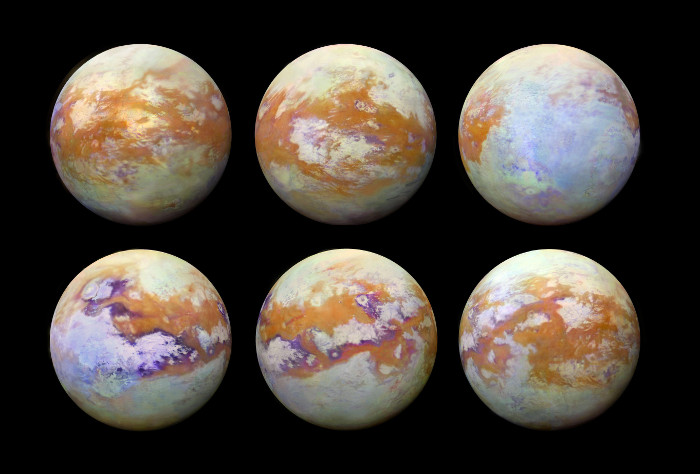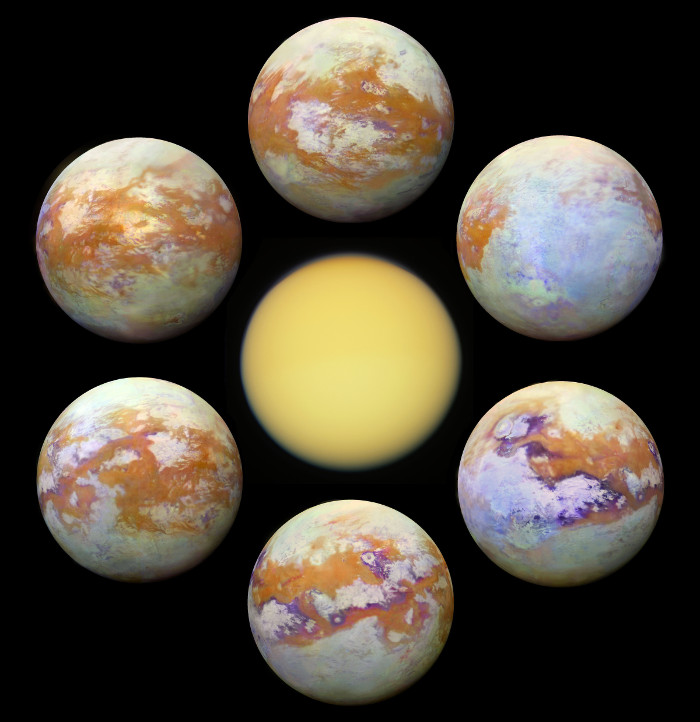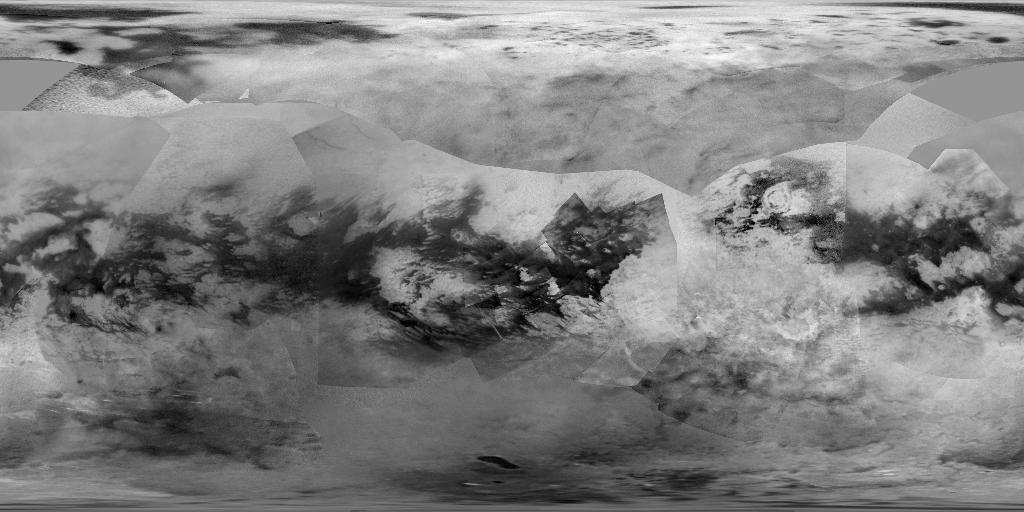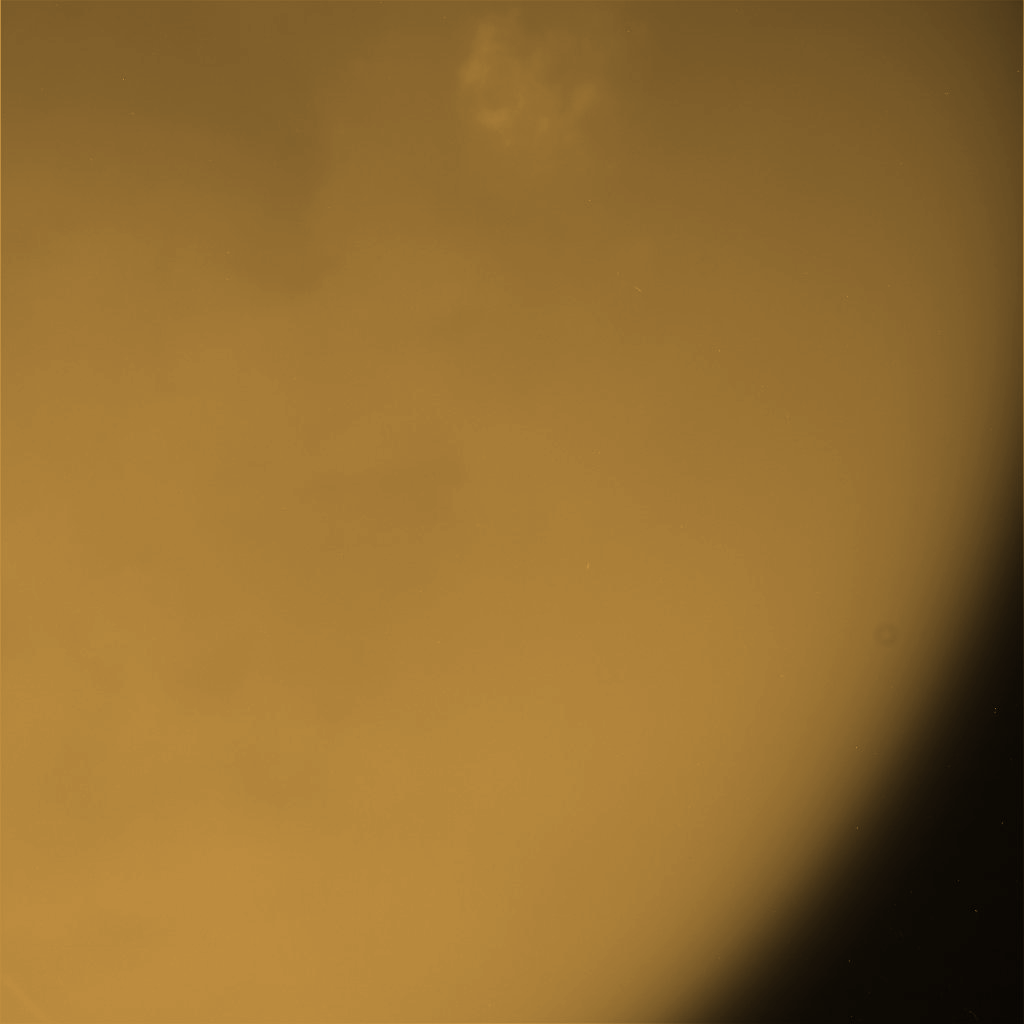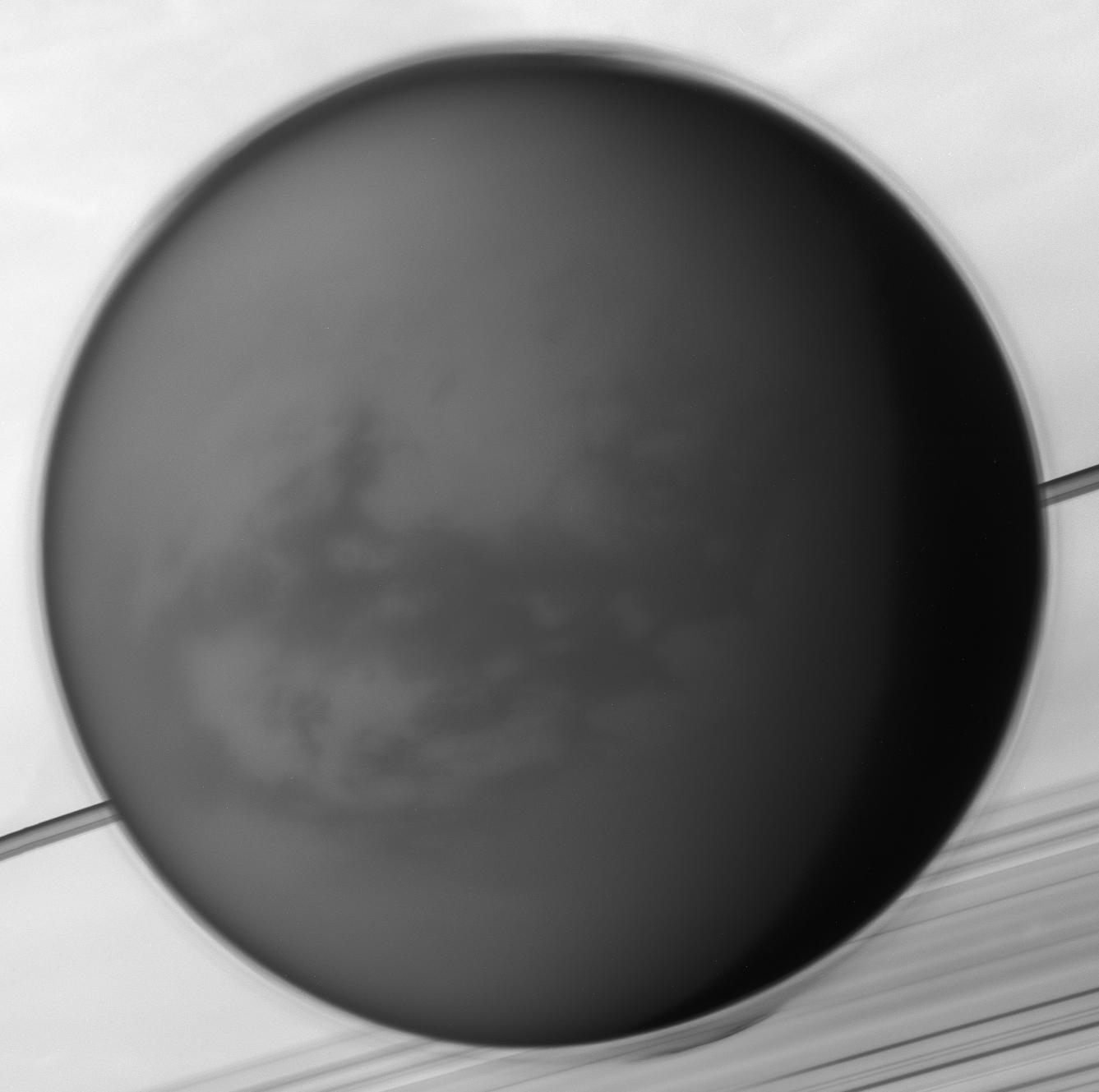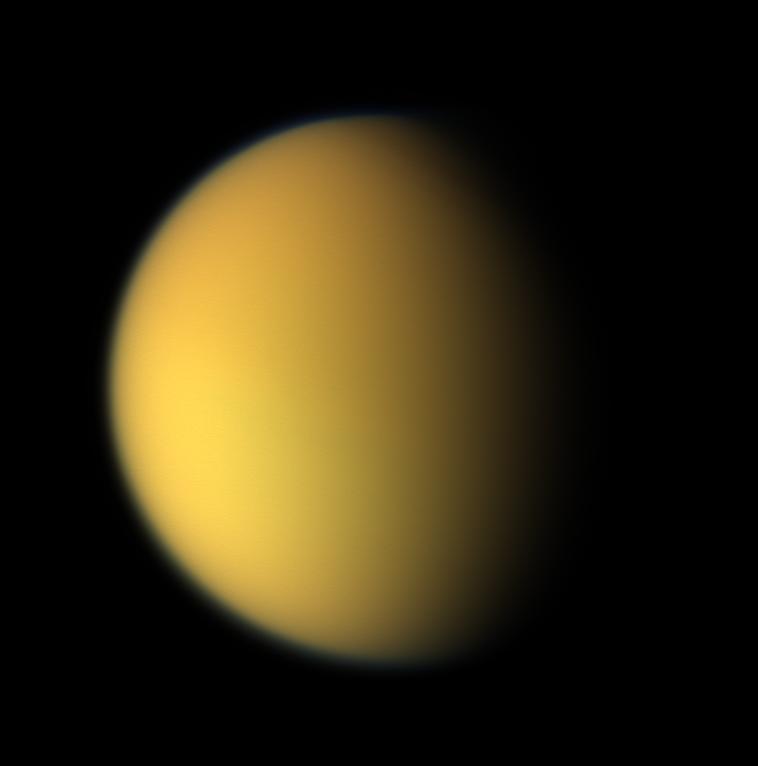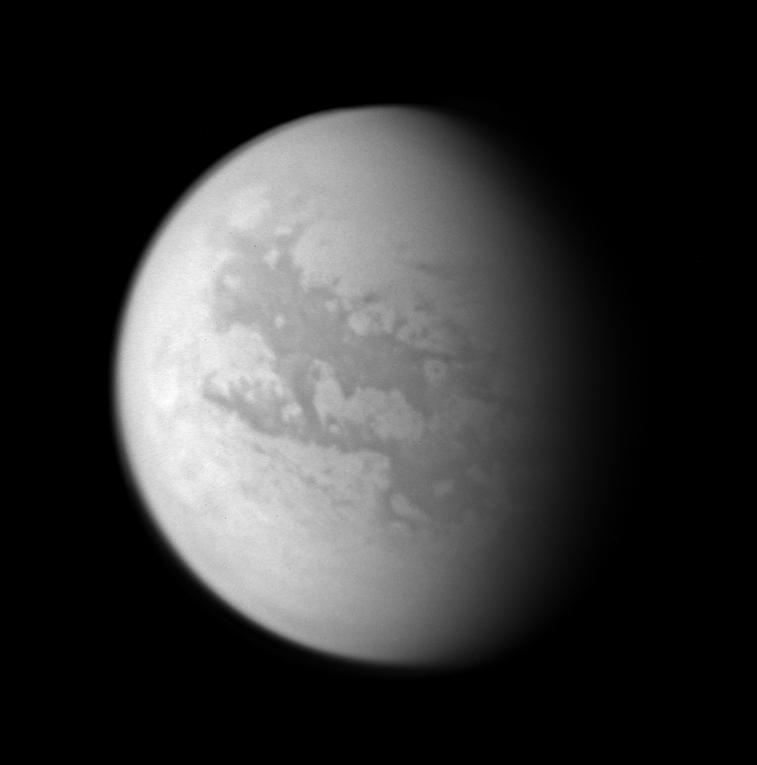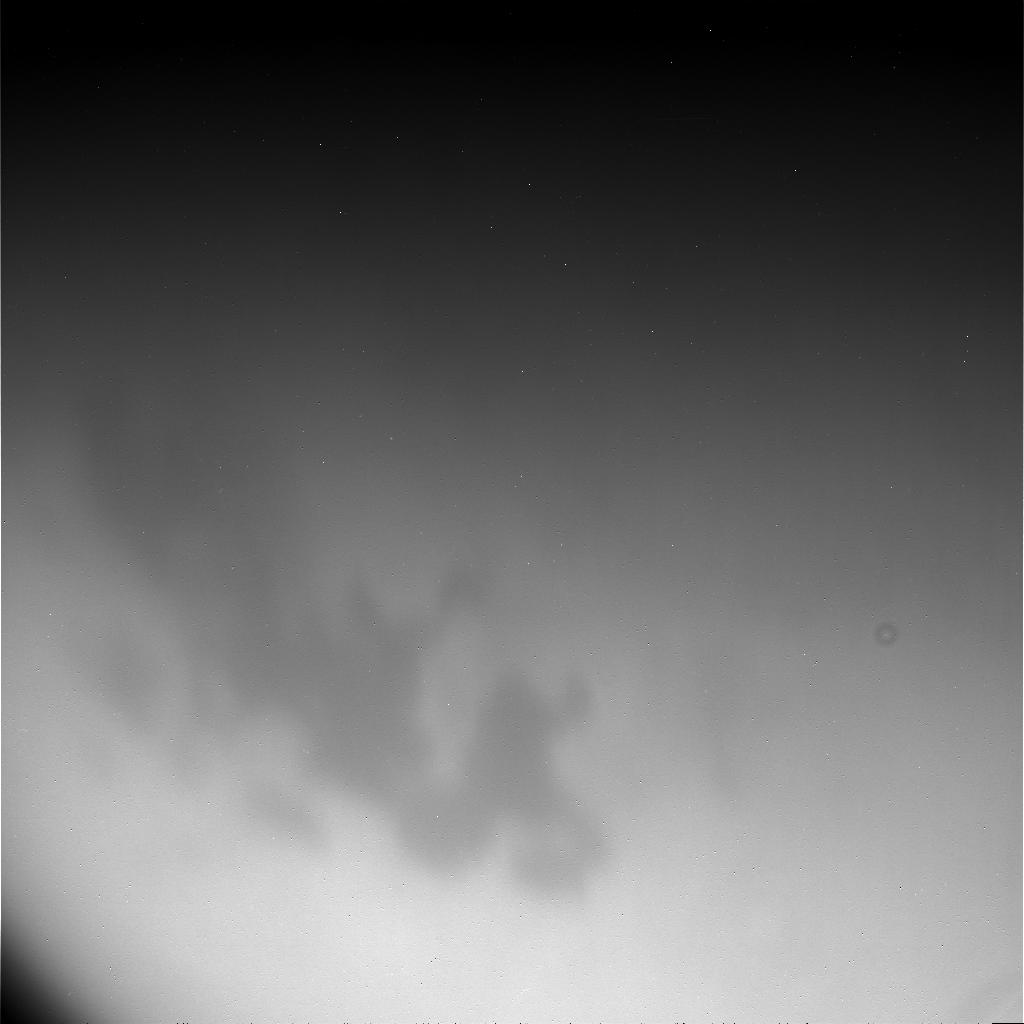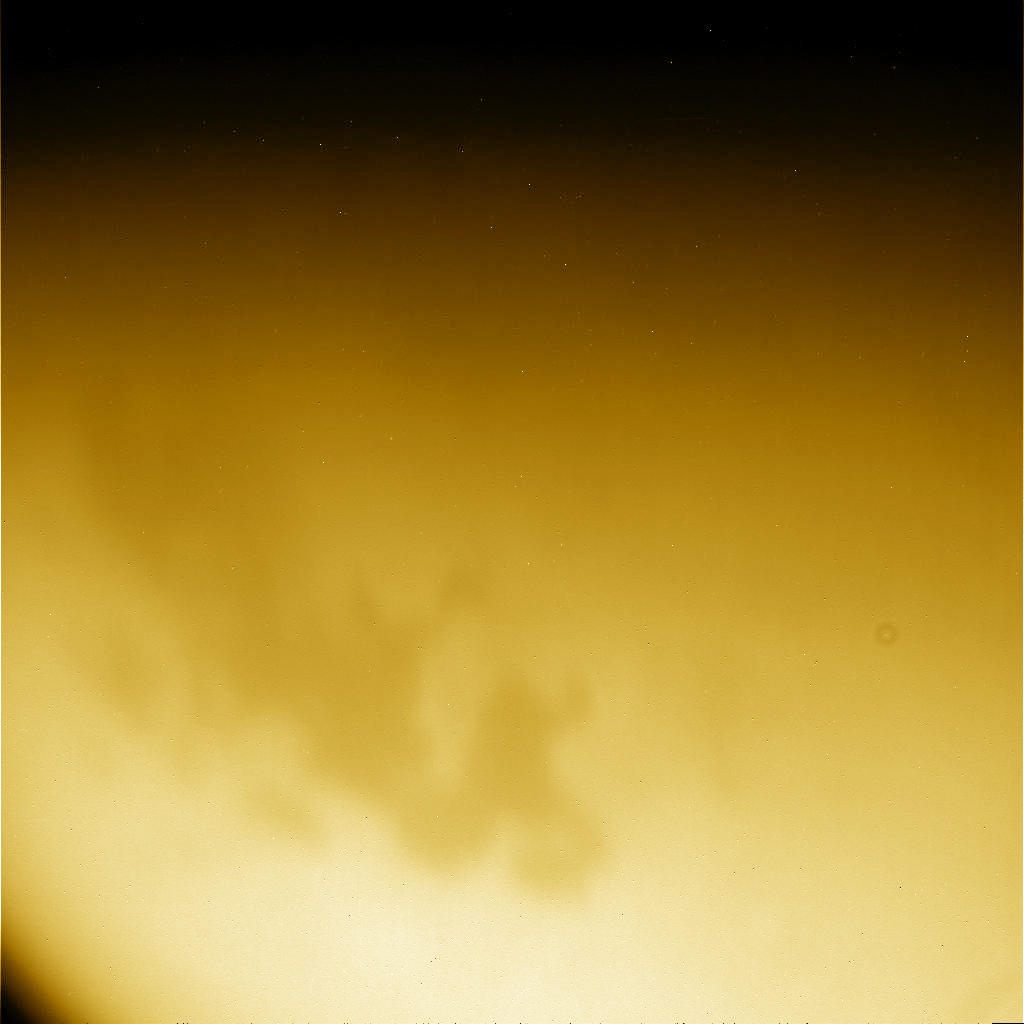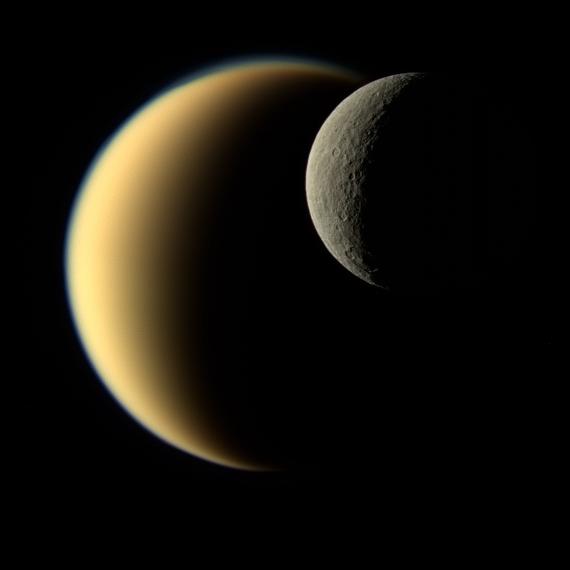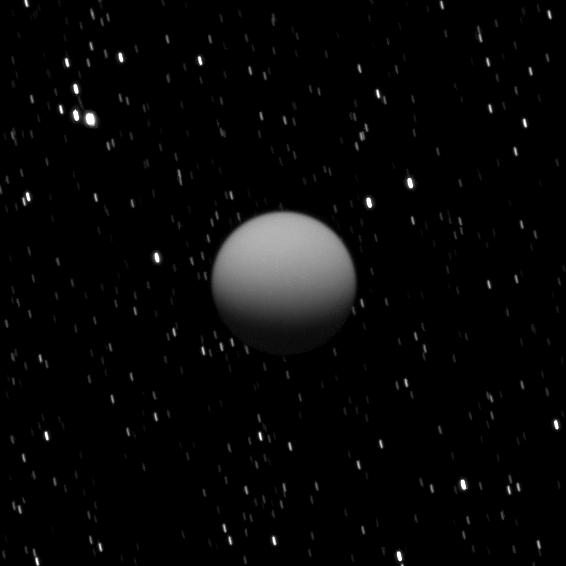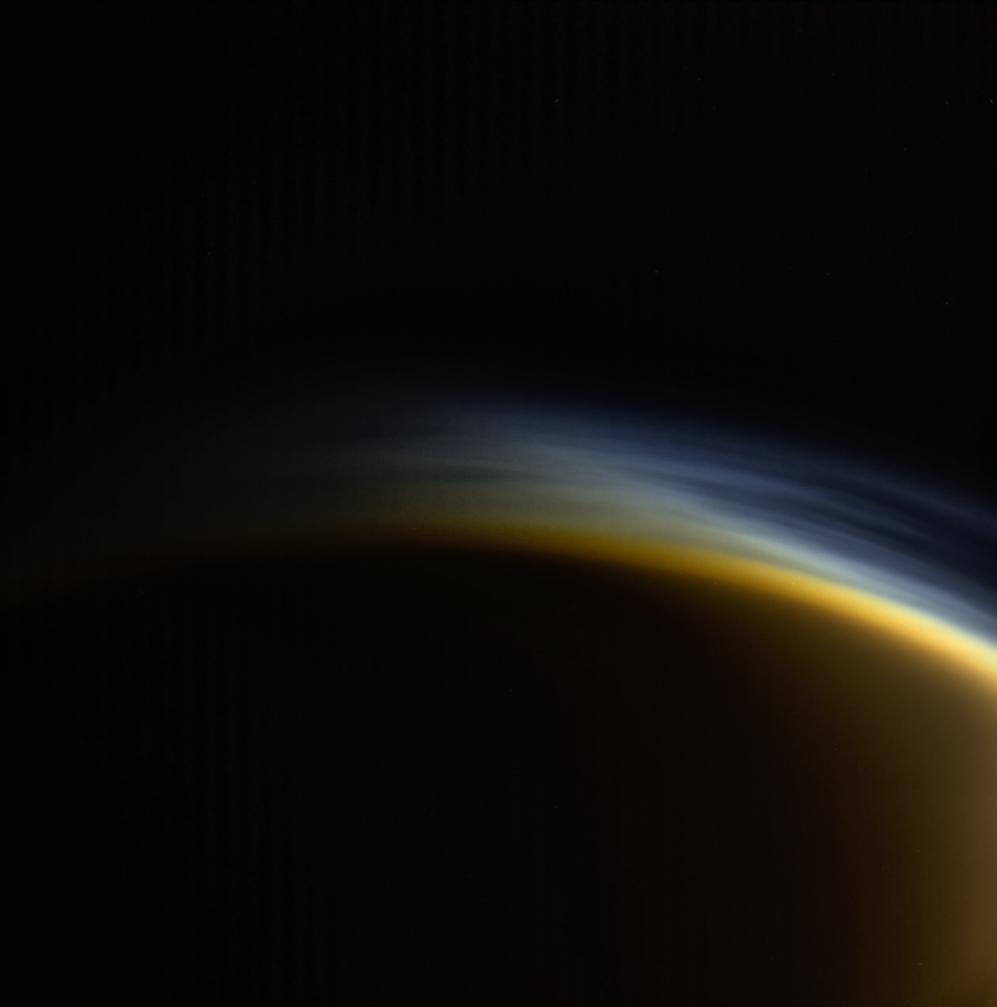|
The mosaic appearing in the
upper part of this table reveals Saturn's largest moon Titan in different
wavelengths of radiation. The three views of Titan were generated on the
basis of data obtained on April 16, 2005 with the Wide Angle Camera of the
Cassini probe. The images were acquired at distances ranging from about
173,000 kilometers to 168,200 kilometers or 107,500 miles to 104,500 miles
from the Opaque Moon and from a Sun-Titan-probe, or phase, angle of 56
degrees. North appears in the upper part of each disk and is inclined 30
degrees to the right.
One can clearly notice that the use of different filters sensitive to
visible light or infrared light can allow us to discern atmospheric
features, haze layers, clouds or surface features. The cameras of the
Cassini orbiter have several filters to study the atmosphere or the
surface of the giant moon. The image found in the left part of the mosaic
represents a natural color view combining photographs captured through
three filters sensitive to red, green and violet radiation. The colors are
close to the colors that our eyes would see. The Opaque Moon represents a
hazy orange globe covered by a tenuous, bluish haze found in the upper
atmosphere. Titan appears orange due to the haze of its atmosphere. The
atmosphere of Saturn's largest moon is mainly composed of molecular
nitrogen and the haze is rich in hydrocarbons.
At the time of the encounters of Titan performed by Voyager 1 and Voyager
2 in 1980 and 1981, planetologists had been frustrated by the fact that
Titan's surface was completely hidden by the smog in the visible spectrum.
Fortunately, the Cassini spacecraft was able to see through the haze and
to identify surface features thanks to its filters sensitive to infrared
wavelengths. The second view from the left in the mosaic reveals surface
features and brightness variations on Titan at 938 nanometers. That
wavelength which represents a near-infrared wavelength allows us to see
through the smoggy atmosphere and to discern surface features. The image
was generated by combining three different views acquired with the same
filter, in order to improve the visibility of features on the ground. One
can notice, in particular, a sharp contrast in the albedo or in the level
of reflectivity between a relatively bright area and a relatively dark
area. The bright areas are probably rich in water ice and the dark areas
are probably rich in organics or hydrocarbons.
The view of Titan found in the right part of the mosaic represents a
false-color composite composed of images acquired at different wavelengths.
Two infrared views obtained at 938 and 889 nanometers and a visible light
view acquired at 420 nanometers were mobilized to produce the final disk.
Green corresponds to regions where the Cassini probe is able to discern
surface features. Red corresponds to regions high in Titan's stratosphere
where atmospheric methane is absorbing solar radiations. Blue surrounding
the atmosphere, in its upper limits, corresponds to visible violet
wavelengths at which the upper atmosphere and detached layers of haze can
be better discerned. Another false-color view revealing the opposite
hemisphere of the Orange Moon was generated from images captured during
the first close flyby of the Opaque Moon in October 2004. During that
particular encounter, we had been in a position to identify clouds in the
area of the south polar region of the giant moon. The area was
experiencing the Summer season. The observations of April 16, 2005 don't
show any clear sign of cloud activity. The original views of the globes unveiled in the mosaic are presented below the mosaic in this table.
Image
Credit: NASA/JPL/Space Science Institute. |
